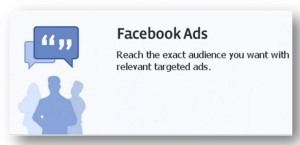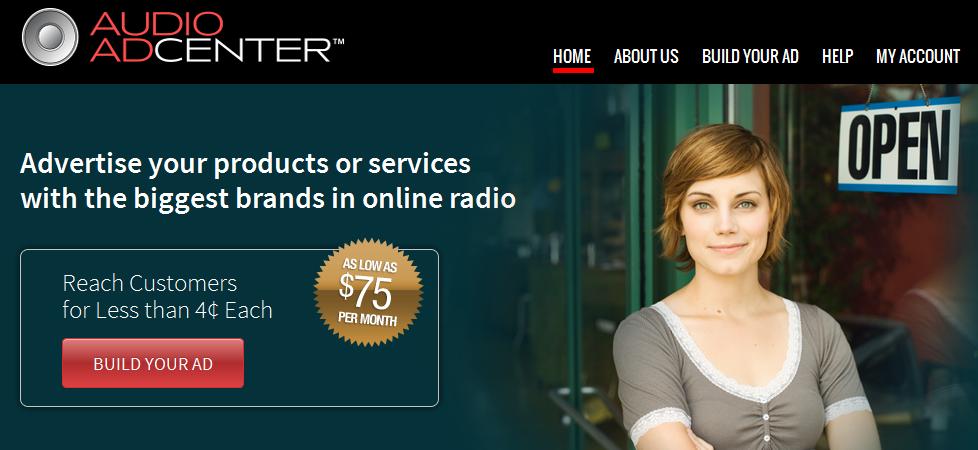It’s no secret that converting ratings to revenue – a financial feat that used to come very natural to radio sellers – has now become a high wire act. We all know many great radio brands with competitive or even stellar ratings that are struggling to “make goal.”
 Because let’s face it, too many radio sales organizations are short on strategy, while being overly reliant on ratings and economic growth to drive their businesses. That isn’t enough anymore.
Because let’s face it, too many radio sales organizations are short on strategy, while being overly reliant on ratings and economic growth to drive their businesses. That isn’t enough anymore.
So as a company that also lives and dies based on ratings and revenue, we’re always looking for new angles, better techniques, and strategic approaches from outside radio that may be applicable.
And today, it’s Facebook and their launch of “objective-based” ad buying. Since it’s became a publicly traded company, Facebook has made incredible progress converting its huge user base into a revenue producing media force.
So what is “objective-based” ad buying, and what – if anything – does it have to do with radio?
First and foremost, this Facebook advertising effort has an overriding goal. Emil Protalinski, a technology journalist for The Next Web, says the ad buying process now starts with a simple question:
“What’s your advertising objective?”
As he notes, the answer to that question comes from Facebook tools that direct advertisers to the best ad solution in the company’s arsenal. So, it’s along the lines of “you have a goal – we have a way to help you achieve it.”
Mark Walsh writes in the Online Media Daily that this Facebook ad program represents two key changes for the brand:
- Helping marketers map out campaign objectives to coincide with ad types
- Providing more flexibility on ad placement
Facebook has identified eight different campaign objectives – everything from website conversions to app engagement to page likes. Once the Facebook team knows which specific objective is more desirable to their clients, they recommend the best ad type to achieve that goal.
Walsh notes that Facebook is looking to achieve two big aims by simplifying the advertising process: cut the number of ad units by 50% and allow advertisers to upload one image size for any ad type on the platform.
 So think about it – a less cluttered environment for ads and a simpler creative process that helps clients reach their objectives.
So think about it – a less cluttered environment for ads and a simpler creative process that helps clients reach their objectives.
Someone’s done their homework, because results, simplicity, and flexibility are universals when it comes to marketers, business owners, and agencies.
And that leads to our parallel conversation about radio.
Too often, the medium has been criticized because it’s too complicated to buy – too many shows, features, options, dayparts, and conflicting ratings information. Plus, too many sellers with limited knowledge of the features, benefits, and metrics of their digital offerings, which just adds to the confusion. New media brands like Facebook provide advertisers with simple, metrics-oriented solutions that are easily tailored to their needs.
Imagine a radio scenario that focused on achieving client objectives (brand-building, store traffic, etc.), and then recommended a particular ad format on the station that has been proven to work best – endorsements, 15s, program sponsorship, mobile app linkage, event sponsorship, web ads, database marketing, etc. The fact is, radio has lots of tools in the toolbox, but perhaps lacks the strategic focus and insights necessary to translate client needs and objectives into simple, clean solutions that make it easy for the advertiser to make a decision, and move on to the next task.
The announcement last week about CBS Radio’s “Audio Ad Center” may be one of those first steps that streamlines the process, allowing advertisers to participate in a DIY solution to buying local streaming audio ads. Look for similar programs from other media companies looking to expand their footprint into businesses that either don’t normally advertise on the radio or don’t feel they can afford to.
For too long, radio stations have gone after “radio dollars,” eliminating the other 90% of the pie that rarely or never advertise on the radio. “New,” “self serve,” and “affordable” are all terms strategically selected for CBS Radio’s press release.
It’s a lot like buying a new car in 2013. Remember how long that process used to take in the pre-Internet days? It often involved multiple trips to the dealership, a lot of back and forth negotiating, and a lengthy, painful process that always made it tough on the buyer. Today, car dealerships are thinking in-line with this streamlined Facebook approach and figuring out how to cater to a changing customer. I just leased a new vehicle, and the entire process – start to finish – took less than 30 minutes. They’ll drop the vehicle off at my office when it’s ready. I won’t break a sweat and I’ll be happy – and they just sold a car.
There’s a lot to be said for simplification, objectives identification, and problem-solving – terms that have not been closely associated with the radio advertising buying process.
Facebook did not come up with “objective-based” ad buying in a vacuum. You have to believe they devoted much time, thought, and dollars into studying marketers and company owners – and then designing a solution from there. Perhaps there are DOS’ and GSMs thinking “We’re doing this now.” But the fact is, radio advertising is as they say, “moderately sluggish,” and I would argue out of step with the mindsets of many marketers and advertisers who want it dumbed down, effective, and quick.
Click, click…proceed to checkout.
- What To Do If Your Radio Station Goes Through A Midlife Crisis - April 25, 2025
- A 2020 Lesson?It Could All Be Gone In A Flash - April 24, 2025
- How AI Can Give Radio Personalities More…PERSONALITY - April 23, 2025





Leave a Reply